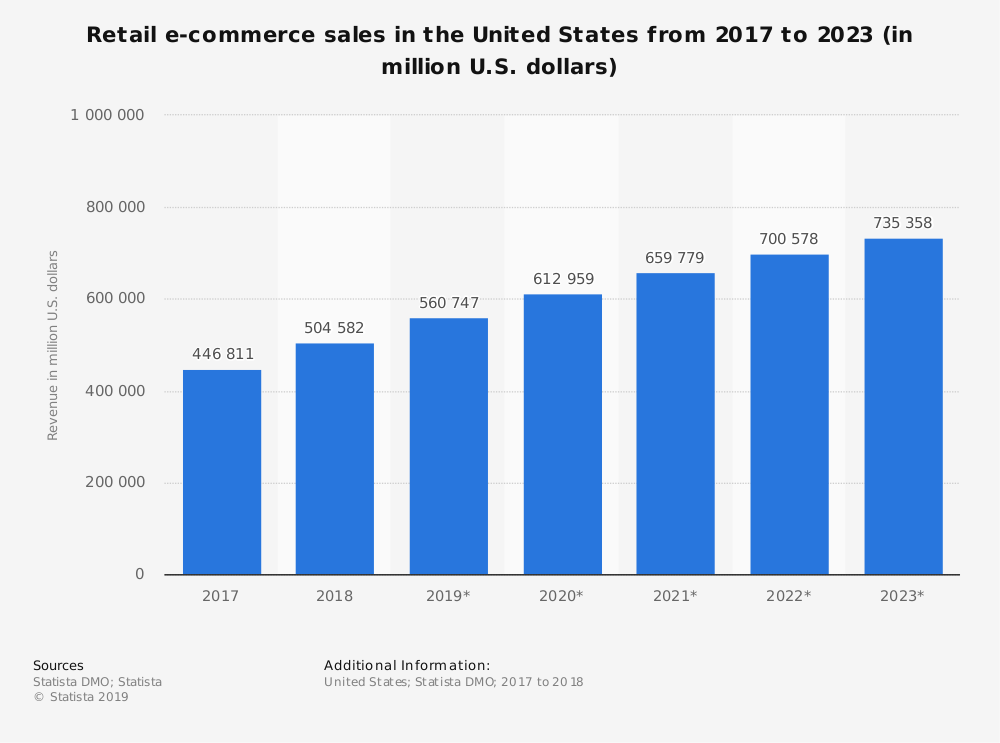How to Start a Dropshipping Business

Paul Martin is the Director of Education and Development for Myron Steves, one of the largest, most respected insurance wholesalers in the southern U.S.

You’ve got a passion for bringing the goods to the people (without actually having to handle them yourself), so you’re starting your own dropshipping business. That’s quite the ambitious endeavor, but it takes more than just a dream and an Internet connection to run a successful business. You’ll need to plan right from the start in order to keep those profits rollin’ in along with the orders.
When the time comes to open up shop, having business insurance for your dropshipping business is the key to maintaining smooth operations. All businesses come with risks (even the fun ones), so you’ll need to obtain protection during your preparation phase. Our independent insurance agents are here to help get you set up with the right coverage for your specific needs. But first, let’s talk dropshipping.
All about the Dropshipping Industry

The interest in the dropshipping industry has certainly fluctuated over the past year, but as of May 2019, Internet searches were projected to be nearly at peak levels for these services.

Not only is there plenty of interest in buying goods online, but the US generates quite a bit of revenue from e-commerce — and it’s only increasing. As recently as 2017, the industry’s total revenue was $446.8 million, and for 2019, it’s projected to climb to $560.75 million. By 2023, revenue is projected to shoot up to $735.36 million. That’s a lot of cardboard boxes on doorsteps.

A quick look at the states doing the most dropshipping in the US shows Texas in the lead, followed by New York, Florida, and California. Now you know where your biggest competition lurks.
How to Start a Dropshipping Business
Your ambition to start a new business is a great motivator, but it’s far from all you need to bring that dream to reality. Of course your vision will be specific and unique (as it should be), but we’ll take a look at some general steps to starting a dropshipping business:
- Step One: Planning. No successful business can begin without a solid plan—we’re willing to bet on that. First up, you’ll need to determine all kinds of stuff like your start-up costs, target market, business name, the products and services you’ll offer, and how long it’ll take you to break even and start turning a profit. You’ll also need to decide what kind of business you want to be (i.e., if you want to work out of your home or from an office space, which niche you want to work in, etc.). Last, if applicable, you’ll need to scout out a location, and actually purchase or rent said property, once you’ve found it.
- Step Two: Legal stuff. Next, you’ll decide what kind of business entity you want to be (e.g., LLC, partnership, etc.), and then go through the proper channels for making it legal by registering with the government. You’ll also need to register for taxes and obtain any required permits and licenses.
- Step Three: Money stuff. This phase involves opening a business bank account so you can accurately monitor your business’s financial performance, and it will also make your life a heck of a lot easier when it comes time to file your annual taxes. Then, it’s time to obtain your start-up costs and determine how much you’ll be charging customers/clients for any goods and services your business will offer.
- Step Four: Define and build your brand. What will your business stand for? How do you want the world to perceive it? These are just a couple of questions you’ll answer in order to define your brand. A solid, unique branding of your business will help it stand out from the competition. Once the nitty-gritty has been figured out, it’s time to get to work building that brand. This generally involves designing business cards, building a website, and establishing a social media presence. If you’re clueless when it comes to Twitter or any of the other platforms, you can always hire (or beg) someone to take care of that aspect for you.
- Step Five: Iron out the details. For your dropshipping business, this could involve finding a supplier, setting up spreadsheets to document your sales, studying market trends, purchasing and setting up advertising for your business, perfecting your website, etc. Basically, any of the specifics needed to make your dropshipping business come to life will fall into this step.
- Step Six: Get coverage. The final step, and perhaps the most important, is to obtain the proper coverage. You’ll need business insurance to protect not only your dropshipping business, but also yourself. Business insurance is the pièce de résistance that’ll help keep your dropshipping business delivering the goods right to customers for years to come.
What Is Dropshipping Insurance?
Broken down, dropshipping insurance is a well-sealed insurance package designed to meet the specific needs of dropshipping business owners. All the coverage offered by a basic small business insurance plan, as well as policy options tailored for the unique needs of dropshippers, are rolled into one.
A dropshipping insurance package simplifies the process of obtaining all necessary coverages for dropshippers while eliminating confusion and stress. Basically, it’s the best way to go.
What Does Dropshipping Insurance Cover?
A dropshipping insurance policy is typically the easiest option when it comes to knocking out your extensive list of coverage needs all together in one tidy package. These policies offer the basics of business insurance coverage, including most of the liability insurance you’ll need, plus specific coverages tailored to your unique niche.
Here are several dropshipping insurance coverage options:
- General liability: This coverage protects you against property damage or injury claims made by a third party.
- Property insurance: Covers loss of or damage to your physical property, including your office space, and often the inventory inside it. Protected mishaps include fires, storms, and more.
- Cyber risk & privacy liability: Covers the loss or theft of customers’ sensitive data, including credit card numbers and more. This coverage can also save your business in the event a deposit or money transfer is intercepted by cybercriminals.
- Inland marine insurance: Covers loss, theft and damage of property while in transit. The goods being shipped to your customers require this coverage specifically.
- Business income: A part of property insurance, this aspect covers the financial loss suffered while a business is closed due to fire damage or other disasters.
Your dropshipping insurance package will be assembled by selecting the coverages that work for your unique business from a big list of available options. Coverage applies to everything from lost business revenue to potential legal/court fees and beyond.
Who Needs Dropshipping Insurance?
Whatever the size or scale of your dropshipping business, if you’re purchasing and selling goods and shipping them to the public, you’ll need protection. Dropshipping comes with a set of unique risks, both obvious and hidden, so coverage is essential no matter what your niche is, including some of the following common examples:
- Wireless devices
- Sportswear
- Baby care products
- Photography gear
- Grooming accessories
- Pet products
- . . . and everything else
Dropshipping insurance will cover all aspects of your business, regardless of the specific type you own. It’s always important to have protection for yourself, your equipment, your inventory and your property, but protection against potential lawsuits is also crucial. Dropshipping businesses of all dimensions and weights can be sued, so don’t risk not having coverage.
How Much Does Dropshipping Insurance Cost?
Truthfully, it depends. On quite a few things. A moderately successful dropshipping business might pay $1,700 annually in combined liability, property, and business income coverages.
Of course, it’s hard to offer an average figure, since each dropshipping service is unique. But really, it all depends on a number of factors, like:
- The type of dropshipping business: This involves more than just if you’ll be fulfilling orders for Apple watches or cat toys. The kind of equipment your business uses and the services offered will affect its level of risk. Obviously, more danger means more money for insurance.
- The location of the dropshipping business: Larger cities tend to have higher costs for insurance, but it goes beyond that. Depending on where you are in the country, your location may be subject to various weather-related risks. Dropshipping businesses along the Atlantic Coast, for example, may have premiums up to 20% higher due to risk of hurricane damage.
- How much business you generate: Premiums are calculated based on business projections for the upcoming year. If your workload doubles, so will your premium, most likely.
Top 5 Business Insurance Claims
From potential injuries to property damage and lawsuits, business insurance is definitely a must-have. In order to keep all operations running smoothly, you’ll need to consider not only the risks unique to your trade, but also those that apply to all kinds of businesses. Here’s a quick look at the most common business insurance claims across the board:
- Theft/Burglary: Whether they’re after money, merchandise, your company vehicles or anything else, thieves and burglars commonly target businesses. Anything you have that could be stolen is worth protecting—before ever opening your doors to the public.
- Weather-related damage: Windstorms and hailstorms create the type of weather damage most often reported by businesses across the map. Whether it’s shattered windows, broken signage, destroyed products or anything else, Mother Nature can wreak havoc when she gets angry. Plan for disasters before they happen, and secure coverage up front.
- Fire damage: Another common/costly claim is fire damage. Be it destruction caused by natural wildfires or resulting from employee negligence (such as with a kitchen fire), these disasters can be devastating. Fire damage can result in lost property, inventory, and even revenue, especially if your business is forced to close. Also, fires are obviously a huge hazard for your workers and customers alike. Take as many proactive measures as possible, such as installing sprinkler systems and extinguishers.
- Employee injury: Even the most well-trained employees on record run the risk of being injured on the job, regardless of the line of work they’re in. Employees may get injured while carrying out daily tasks, due to the negligence of a coworker, while making service deliveries, or in a myriad of other ways. Protecting your workers with workers’ comp is crucial, not to mention mandatory in most states.
- Customer injury: Of course, your business’s customers are also at risk of injury while on your property. Slips and falls are some of the most commonly reported business insurance claims, but customers can also be injured due to unsafely stocked shelves, employee negligence, faulty products, and much more.
Top 5 Business Insurance Discounts
Owners of businesses of every size, color, and flavor love scoring discounts however they can. And fortunately, there are some discounts out there to help obtain a significantly lower premium, like:
- The safety discount: Insurance companies love working with clients who put safety first. Put practices in place to keep your employees, equipment, and physical space as safe as possible, and you're likely to be rewarded by your insurance company. Installing sprinkler systems and burglar alarms are just a couple examples of easy ways to score this discount.
- The quality discount: Establishing a track record of quality goods, services, and customer interactions will not only keep your business running strong, but also help reduce your insurance costs. Essentially, keeping your clients happy is the key to keeping your insurance company happy, and they just might slash your premium as a thank-you in return.
- The low claims history discount: Along the same lines as maintaining a safe and efficient business, having a low claims record is another way to seriously please your insurance company—and over time they’ll probably reward you for it. Plus, if you ever need to switch insurance policies or companies, having a low or even squeaky-clean claims record will definitely help you land a lower premium.
- The professionalism discount: Sometimes insurance companies send out inspectors to observe your business during a typical day of operation. If your equipment is clean and well-maintained, your employees are following necessary safety protocols, and your customers/clients seem happy, you’ll get a good report. A favorable evaluation could reward you with a reduced premium.
- The bundle discount: Purchasing multiple types of insurance with the same company is a tried and true way to save money, but so is purchasing specialty insurance packages. These packages, made up of multiple policies tailored to a specific kind of business, are designed to save you money—and just generally make life easier. And since they exist, you might as well take advantage.
How to Find the Best Dropshipping Insurance
In order to get the protection you need (and deserve), you’ll want to work with a trusted expert. Independent insurance agents will not only know where to find the best coverage and price, but also help to make sense of the fine print.
Consider your business’s unique needs, then connect with an agent to help you take it from there. Have a list of your specific concerns and desires handy before you reach out, to help make the process even smoother.
Compare Dropshipping Insurance Quotes with an Independent Insurance Agent
We all know how valuable your time is, so why spend it doing all the hard work yourself? From business insurance packages to special add-on policies, our expert independent insurance agents will help you determine which types of coverage make the most sense for you and your new business.
Our independent insurance agents stay on top of the insurance industry and all the latest discounts so you don’t have to. That means they’ll help find the right coverage at the right price for you.
They’re not just there at the beginning, either. If disaster strikes, your agent will be there to help walk you through the claims process and make sure you are getting the benefits you’re entitled to. Now that’s thinking ahead.
Statista
